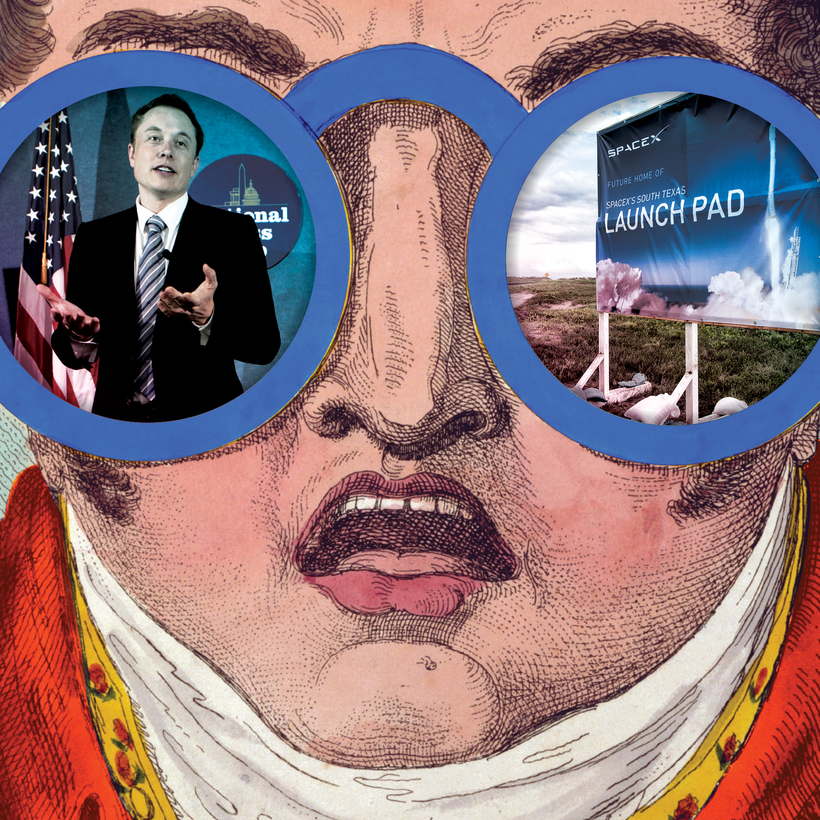In January 2010, the Department of Energy issued a $465 million, low-interest loan to a struggling company with big dreams of building an electric future, but little in the way of commercial traction. The loan was designed to help the company achieve its plans to bring a viable product to market. “This is an investment in our clean energy future that will create jobs and reduce our dependence on foreign oil,” Energy Secretary Steven Chu said at the time. “This is part of a sustained effort to develop and commercialize technologies that will be broadly deployed.”
Three years later, that company, Tesla, had enjoyed so much success that it was able to repay the loan early and in full. “I would like to thank the Department of Energy and the members of Congress,” Tesla C.E.O. Elon Musk said, “and particularly the American taxpayer from whom these funds originate.” Musk had good reason to be grateful: Tesla had been on the brink. In 2009, the company had sold just 937 cars, lost tens of millions of dollars, and almost run out of cash. But with the government loan secured, Musk was able to take the company public in 2010 and bring the Model S into production. Today, Tesla has a market cap of more than a trillion dollars—and Musk was able to finance his purchase of Twitter by selling some of his Tesla stock.
This is all history that the emperor of DOGE appears to have forgotten. After all, what could be more inefficient from a government (and taxpayer) point of view than offering a low-interest loan to a company that had every chance of failing? If, rather than providing a loan, the government had invested $465 million in Tesla’s stock at the I.P.O. valuation of $1.5 billion, its stake today would be worth somewhere in the realm of $300 billion. It would be a major surprise if DOGE’s total spending cuts ever come anywhere close to that figure. But the Department of Energy program wasn’t about the efficiency of a financial return. It was about achieving long-term government priorities, through spending.
If you think the $465 million loan to Tesla back in 2010 was small potatoes, how about the approximately $22 billion that SpaceX has secured in federal contracts over the last decade? In fact, a major turning point in SpaceX’s fortunes was the Russian annexation of Crimea in 2014. Up to that point, the U.S. had relied on Russian-made rockets for space launches. But after the war in Ukraine began, the U.S. government decided this was untenable for national security and created the National Security Space Launch program, which gave contracts to U.S. companies to develop domestic rocket technology. SpaceX won one of the contracts. This was not a government decision that maximized efficiency, as the Russian rockets were cheap and abundant. But it arguably benefited the United States’ global leverage—and it certainly benefited SpaceX.
In 2009, Tesla had sold just 937 cars, lost tens of millions of dollars, and almost run out of cash. But with the government loan secured, Musk was able to take the company public later in 2010, and bring the Model S into production.
As the war progressed, yet more government money came Musk’s way, via Starlink, the subsidiary of SpaceX that provides Internet connectivity via satellite. By the autumn of 2022, Ukraine had obtained more than 20,000 Starlink terminals, which aided in restoring military and civilian communications in the country. Some of these terminals were donated by Starlink, but some were purchased by none other than U.S.A.I.D., which Musk is currently trying to eliminate. He’s not just biting the hand that feeds—he apparently wants to saw it off.
Or perhaps the more appropriate metaphor is pulling up the drawbridge after him. As David Eaves, associate professor of digital government and co-deputy director of the UCL Institute for Innovation and Public Purpose, told me, “One cannot underestimate the importance of the U.S. federal government in the creation of Silicon Valley.” The stories of Tesla and SpaceX sit within a larger history of public investment minting private billionaires. The 1960s DARPA project ARPANET, which became the foundation of the modern Internet, was funded with $1 million of taxpayer money that was diverted from ballistic-missile defense. The Internet has developed into an enormous public good. But in terms of how the benefits have concentrated in the tech titans’ hands, and in their corporations, which today hoard billions in offshore tax havens … was the investment efficient?
Just this week another Musk company, xAI, announced the launch of Grok 3, which Musk quickly trumpeted as “the smartest AI on earth.” The jury is out on that. But what no one can dispute is that, as huge fortunes have been built by A.I. founders over the last couple of years, the U.S. government’s investments were foundational to the development of the field. “The DARPA support of AI and computer science is a remarkable story of the nurturing of a new scientific field,” wrote Allen Newell, a Turing Award–winning computer scientist and one of the true pioneers of the field. “The DARPA effort, or anything similar, had not been in our wildest imaginings.”
Under the guise of a crusade against D.E.I. and corruption, DOGE appears to be harming future innovation and wealth creation in the U.S. In this respect, I’ve been particularly dismayed by the cuts to the National Science Foundation and the National Institutes of Health, both also early (and current) funders of A.I. research. In response to DOGE directives, the N.S.F. has already fired 10 percent of its staff, and N.I.H. announced it would dramatically cut back its grants to fund university research. As David Deming of the Harvard Kennedy School recently noted in The Atlantic, “Government funding of abstract, seemingly useless research can lay the groundwork for transformative discoveries. To take just one recent example, the development of Ozempic and other GLP-1 weight-loss drugs originated in NIH-funded research into reptiles.”
Why these cuts? Is it all a wild power grab? A means of ensuring that future entrepreneurs don’t benefit from government spending as Musk has? Is it just collateral damage?
There is undoubtedly a great deal of corruption and waste in government spending. But as Eaves noted, “The government’s main role is an aggregator of capital so it can make investments. And if the public is robbed of its confidence in the public sector’s ability to make investments that generate public-good outcomes, then we’ve been robbed of a critical tool to address key problems of our time.”
The most financially efficient decision for the U.S. government might be to tax the extraordinary and outsize gains the tech titans have accrued from its investments over the last decades. But don’t hold your breath for anyone who was sitting in the front row at Trump’s inauguration to propose that.
Oz Woloshyn is the host of the TechStuff podcast and the co-founder of the podcast network Kaleidoscope


